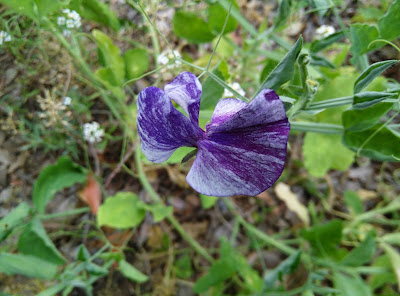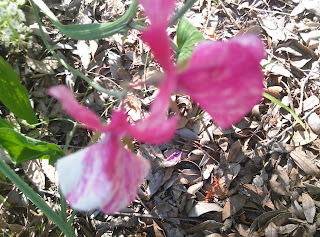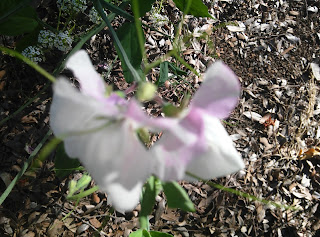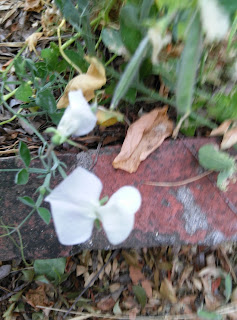Easter Sunday this year fell on March 27, three days after Steve and I returned from our spring visit to Idaho. At that time our Easter Cactus was covered with buds, but they showed no sign of opening until Monday April 18, in time to develop full bloom by the first day of Passover on April 22. Hence the question mark after easter in the title of this post.
I must admit that I'm not especially fond of container gardening. I much prefer to grow plants in the ground, but two or three years ago we put up a broad shelf that's an obvious place to display potted plants along the front of the house.
When we moved here in 1975, the space under what is now the potted-plant shelf was a sturdy brick planter with an old split-leaf philodendron entrenched in it. The split-leaf philodendron, in my not-so-humble opinion, is a cliché of the plant world. It was wildly popular as a gift plant during the 1950s, when this house was built. Its rather oxymoronic scientific name, Monstera deliciosa, refers to the fruit which, according to wikipedia, tastes like fruit salad. I never noticed any fruit on ours, and probably wouldn't have tasted it if I did.
It took me a long time to get rid of that monstrous old philodendron. Its thick, fleshy roots were trying to penetrate the foundation of the house and needed to be pried loose. I resolved not to plant anything in the old brick planter, and for several years tried using it for a bench. The problem there was that it was simply too uncomfortable for anything but emergency seating.
I've kept this particular Easter Cactus alive for several years. In some years it's squeezed out a few spring blossoms. What is different this year? Two years ago I replanted it in a glazed ceramic pot along with a scoop of balanced plant food, and set it in a place where it doesn't need to be moved. Upon reflection, I realize that must have been when I was populating the new shelf with (mostly) newly repotted plants. I've also been more consistent with watering. Reclaiming laundry water on a regular basis means USING the water on a regular basis, though sometimes I don't think about the potted plants until everything else has had its generous allotment,
It was because I thought I knew how to take care of cacti that I failed to give the Easter Cactus enough water. Rather than question my methods, however, I began to question whether it was really a cactus (hence the question mark after cactus in my title). A quick foray into wikipedia and some rare-plant nursery websites assured me that it is indeed a cactus, its spines having evolved into little hairy tufts appearing at regular intervals along the edges of its flat leaves. A native of the rainforests of southern Brazil, it belongs to the huge rhipsalideae tribe which also includes Christmas Cactus, Thanksgiving Cactus (new to me), and the broader leaved epiphyllums which have been having a hard time under my care in recent years.
I foresee happier days ahead for my rhipsalideae.





